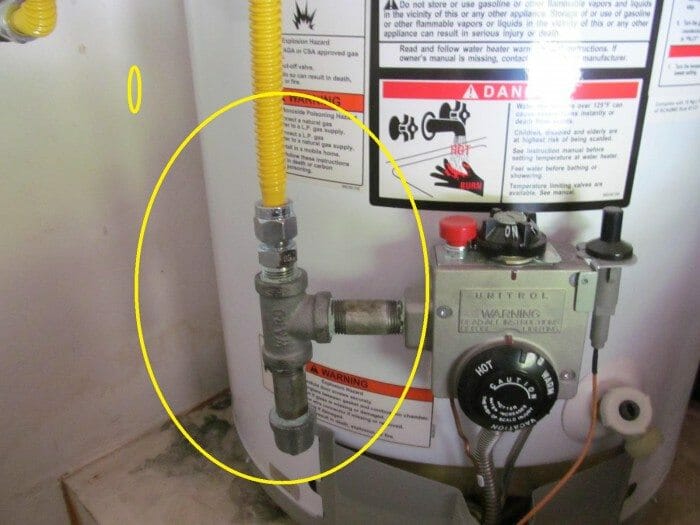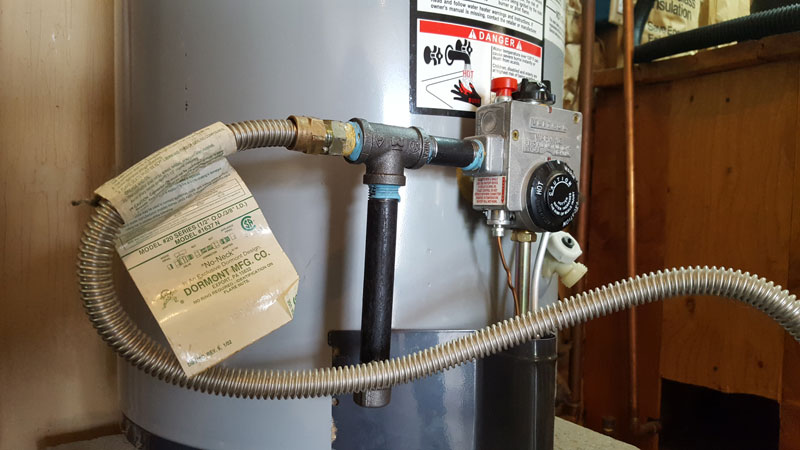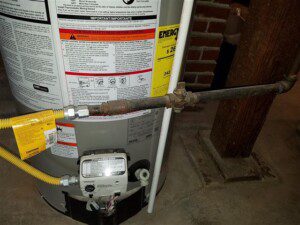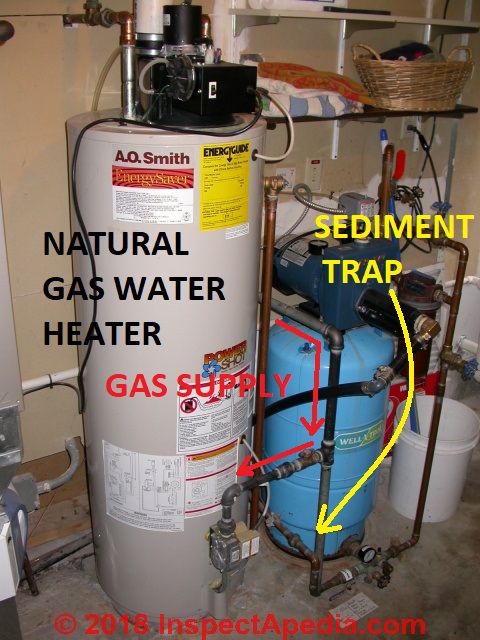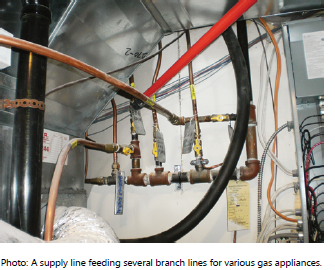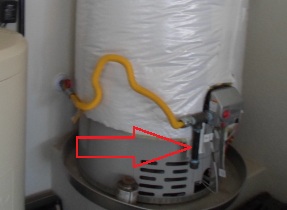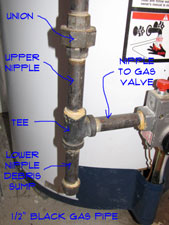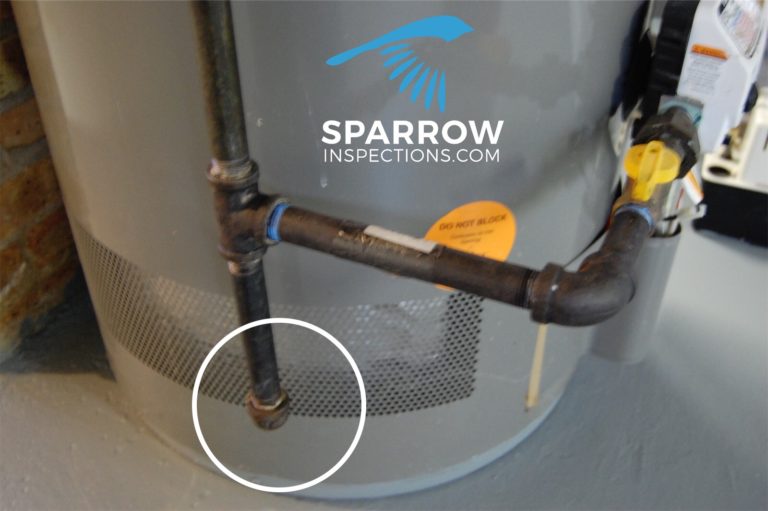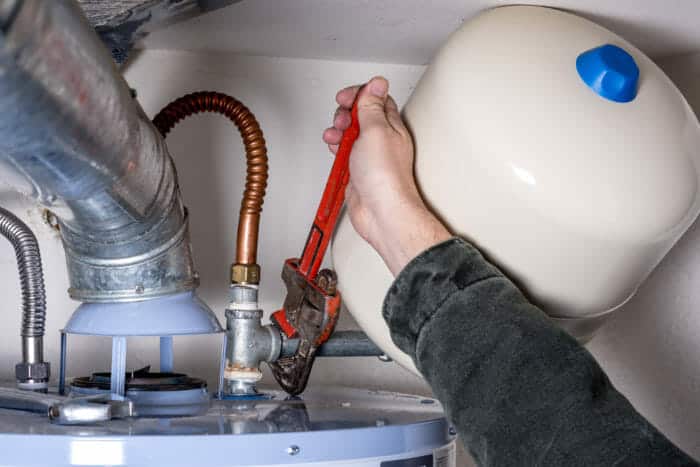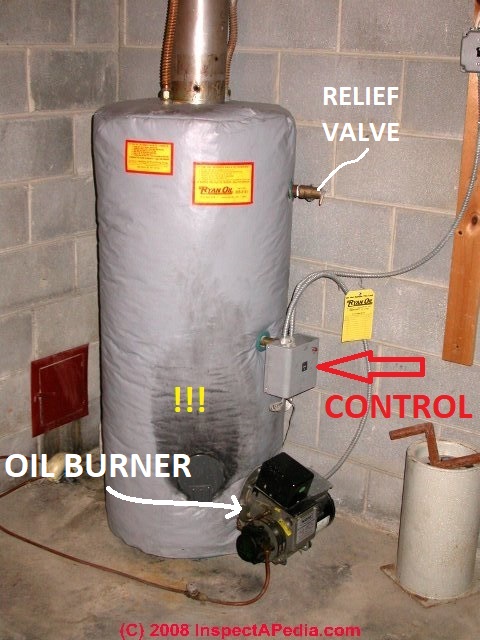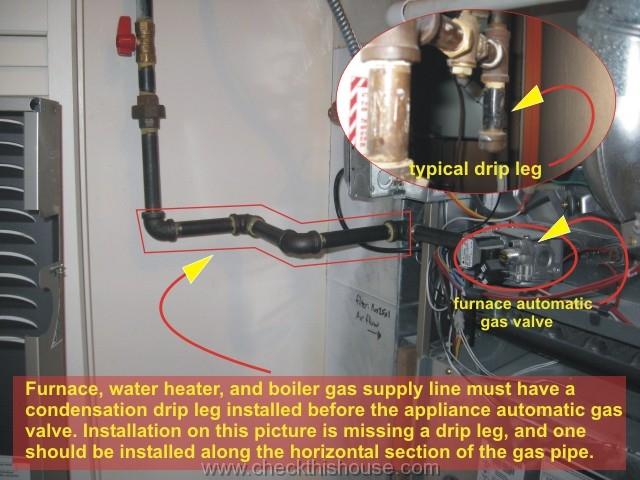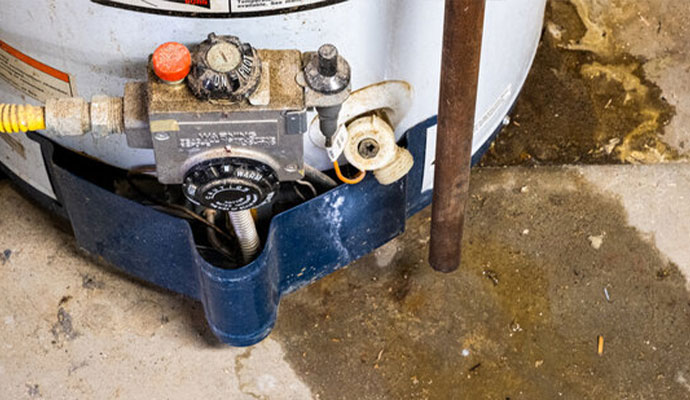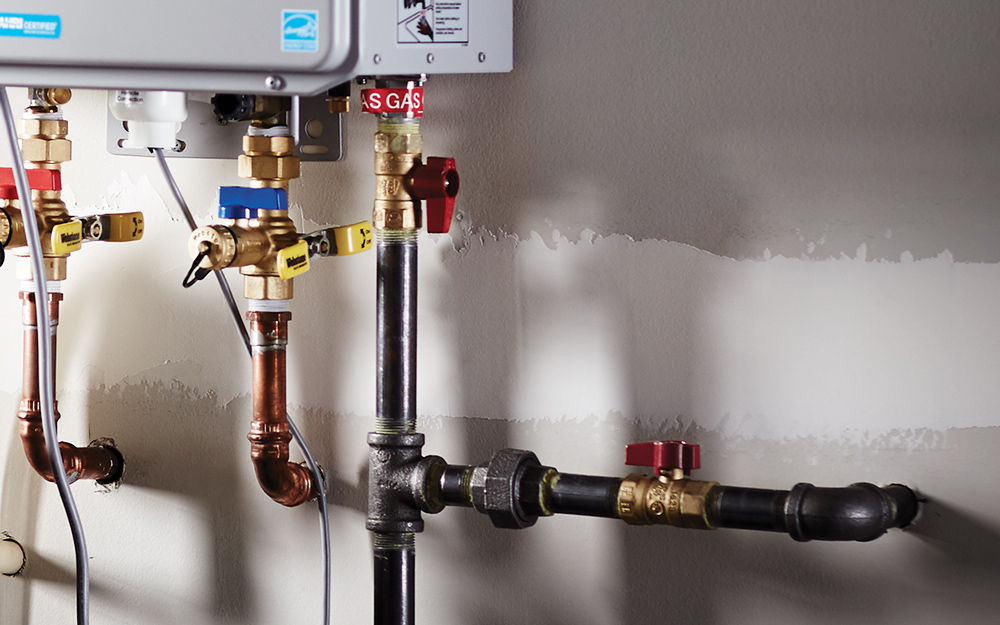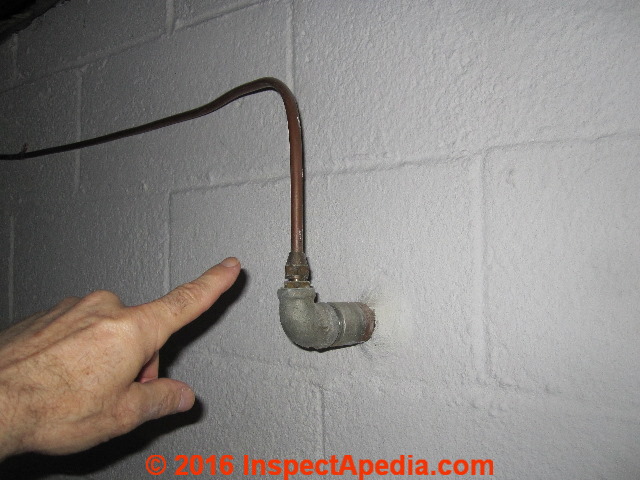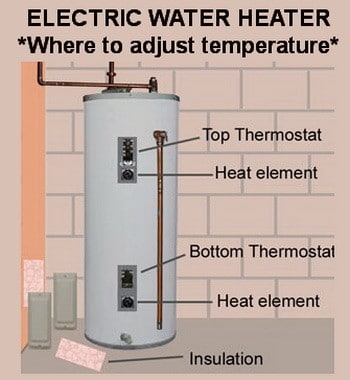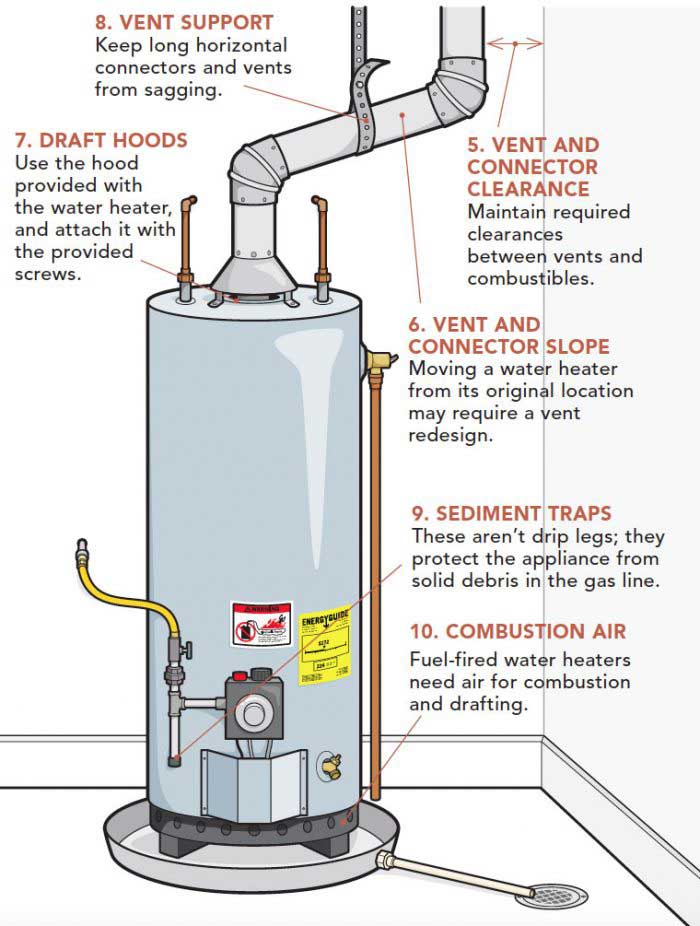The drip leg sediment trap called by either name is a gas line safety device required by the national fuel gas code ansi z223 1 nfpa 54 and by the irc international residential code the upc uniform plumbing code and the nfpa national fire protection agency along with most if not all manufacturers of large gas appliances including water heaters and furnaces boilers and gas pool heaters and is listed in the installation procedures of the appliance manual installation instructions.
Water heater gas line drip leg.
A drip leg can be installed anywhere at the low point in the piping system if there is moisture in the gas to allow for the removal of the condensation.
Keep the hot water heater control valve free of moisture by installing a drip leg.
Sediment traps are usually installed very close to the water heater or furnace valve.
Unfortunately the lack of or incorrect installation of a drip leg or sediment trap is another common item found by home inspectors daily.
Water heater gas connector supply line drip leg is intended to capture any condensed water that may have been transported with gas and shall be installed as close to the inlet of the water heater as practical not required on illuminating appliances ranges clothes dryers gas fireplaces and outdoor grills.
This drip leg will catch any condensation or debris that can damage integral parts of the heater.
It s called a sediment trap.
The outlet of the meter is one such location.
Drip legs and sediment traps are a capped off section of gas line that is designed and installed to catch debris or moisture in the gas line to keep the system clean.
Drip legs are a necessity for a natural gas water heater.

